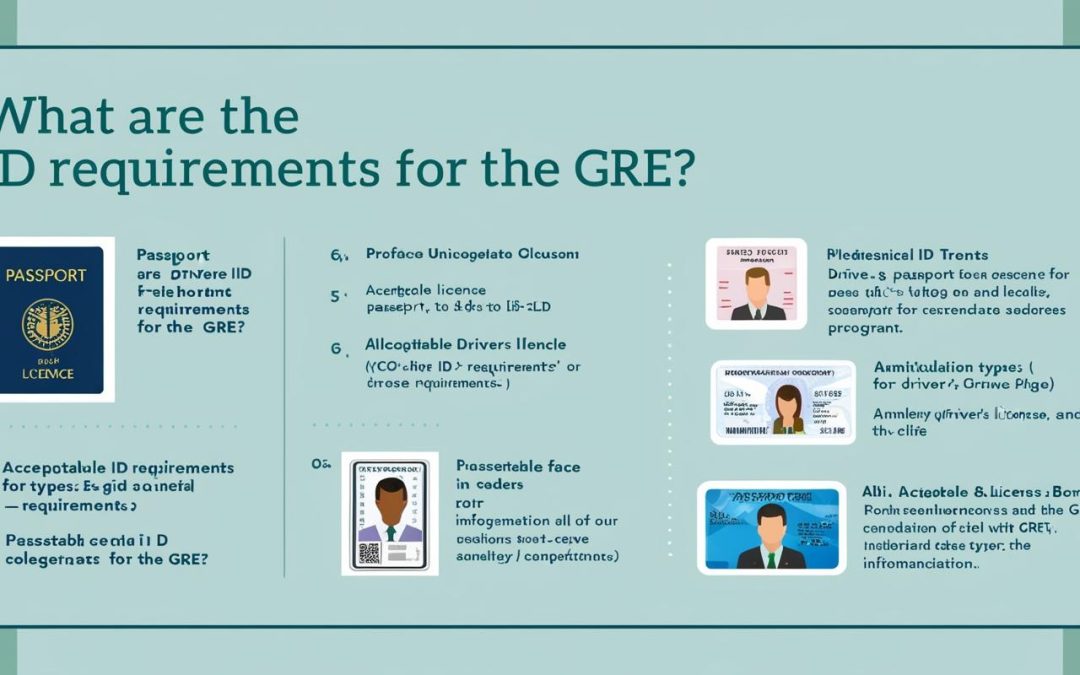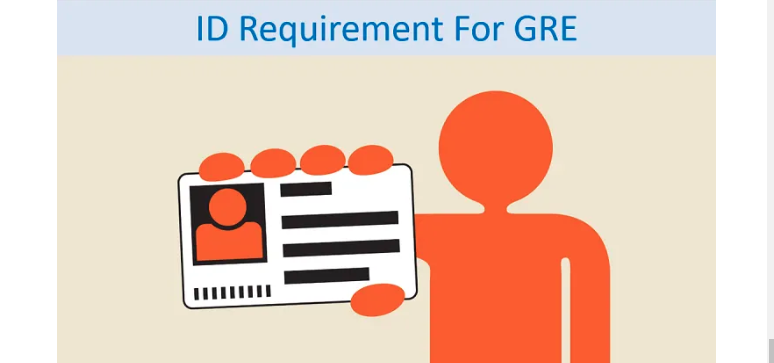When preparing for the GRE, students often focus on study schedules, test prep materials, and time management. But one crucial aspect that sometimes gets overlooked is ensuring you have the proper identification for test day. To ensure a smooth, stress-free experience when you take the GRE exam, it's essential to understand the ID requirements and make sure you're fully prepared.
At TakeMyGREExam.com, we’re here to guide you every step of the way and that includes providing all the details about the ID requirements for the GRE. So, let’s dive in and ensure you're all set to show up on test day with the right documents.
Why Is ID Required for the GRE?
Before we go into the specifics of which IDs are acceptable, let’s understand why the GRE requires identification. The GRE (Graduate Record Examinations) is a critical step for students applying to graduate programs, so securing your identity on test day is crucial. This ensures that the test is taken by the correct person, upholding the integrity of the exam.
The identification you provide verifies who you are, confirming your eligibility to take the test. Without a proper ID, you may not be allowed to sit for the exam which could mean rescheduling your test and possibly affecting your graduate application timeline.
What Are the ID Requirements for the GRE?
Now, let’s break down the key points you need to know about the ID requirements for the GRE:
1. Acceptable Forms of Identification
The GRE requires you to bring an original, government-issued ID. The ID must meet the following criteria:
-
Photo ID: The ID must include a recent, clear photograph of you. This ensures that the test center can easily verify your identity.
-
Name Matching: The name on your ID must match exactly with the name you used to register for the GRE. If there are any discrepancies, you might face difficulties. If there are spelling differences, or if you’ve changed your name recently, contact the GRE customer service to resolve the issue before test day.
-
Date of Birth: Your ID must include your date of birth. This helps verify that the correct person is taking the exam.
-
Signature: The ID should include your signature, which will be used to confirm your identity during check-in.
2. Types of Acceptable IDs
Commonly accepted forms of ID for the GRE include:
-
Passport: A valid, unexpired passport is a great choice. It's internationally accepted and satisfies all GRE ID requirements.
-
National/State-issued Driver’s License: Your state-issued ID or driver’s license with your photo is another acceptable ID.
-
National Identity Card: If you are taking the GRE outside of the United States, you may be able to use a national identity card that meets the above requirements.
-
Government-issued ID: This could be a military ID or another government-issued ID that includes your photo, signature, and date of birth.
3. What to Do if You Don't Have the Required ID
If you do not have any of the acceptable IDs, you must contact ETS (the organization that administers the GRE) well in advance to make alternative arrangements. While it’s possible to take the test with alternate forms of identification in some cases, you should not wait until the day of the test to resolve this issue.
4. What to Avoid on Test Day
-
No Photocopies or Expired IDs: Photocopies of your ID will not be accepted, nor will expired IDs. The ID must be original and unexpired.
-
No Social Security Cards or Birth Certificates: These documents are not acceptable, even though they may have your name and date of birth.
-
No Digital IDs or Phone-based IDs: A digital or mobile-based identification, such as an ID saved on your phone, will not be allowed.
Tips to Avoid Issues with Your GRE ID
-
Double-Check Your Name: Before test day, make sure the name on your ID matches exactly the name you registered with. Any inconsistencies could cause problems. If there’s an issue, contact ETS immediately.
-
Check Expiration Dates: Ensure your ID is valid and not expired. If your ID is close to expiring, renew it before registering for the GRE to avoid last-minute hassles.
-
Know Your Test Center: Some test centers may have specific guidelines regarding acceptable forms of ID. It’s a good idea to review any communication you receive from your test center to ensure your ID will be acceptable.
-
Plan for Unexpected Situations: If you're traveling to the test center from far away, plan your route and arrive early. This will help you account for any unexpected delays and ensure you're on time with your ID in hand.
What Happens If You Forget Your ID?
If you forget to bring your ID to the GRE test center, you will not be allowed to take the exam. This can be incredibly frustrating, especially if you're well-prepared for the test. Be sure to double-check that you have your ID the night before the test, and keep it in a secure but easily accessible place.
Frequently Asked Questions (FAQs)
1. Can I use my student ID for the GRE? No, a student ID is not an acceptable form of identification for the GRE. You must have a government-issued ID with a photograph, signature, and date of birth.
2. What should I do if my name has changed recently? If your name has changed (due to marriage, divorce, or other reasons), you must update your GRE registration information. ETS allows you to make these changes by contacting customer support. Ensure the name on your ID matches your GRE registration exactly.
3. Can I use an expired passport for the GRE? No, expired IDs, including passports, are not accepted. You must present a valid, unexpired government-issued ID.
4. What if I don’t have any of the accepted IDs? If you do not have an acceptable ID, contact ETS before your test date. In some cases, alternate forms of identification can be arranged, but you must confirm this in advance.
5. Can I bring a copy of my ID? No, you cannot bring a photocopy of your ID to the GRE. Only original, unexpired IDs are accepted.
6. What happens if I forget my ID on the test day? If you forget your ID, you will not be allowed to take the GRE. Be sure to check the night before your test to ensure you have your ID with you.
Conclusion
Your GRE test day is crucial for your graduate school journey, and proper identification is a key part of the process. By understanding and following the ID requirements, you can avoid unnecessary stress and ensure a smooth experience when you sit for the exam.
At TakeMyGREExam.com, we’re committed to providing you with all the essential information you need for GRE success. Be sure to check your ID well in advance, and reach out to us if you have any further questions or need additional support. Good luck with your GRE journey you've got this.
Feel free to share this guide with fellow students, and be sure to check back for more tips and updates on everything related to the GRE.


